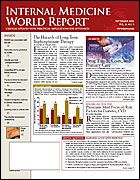Publication
Article
Internal Medicine World Report
A Crisis Looming: Critical Care Physician Shortage
Author(s):
A new report by the Department of Health and Human Services reveals that two thirds of patients who need critical care services may be receiving suboptimal care, because the current demand for such services has exceeded the supply of specialists to provide them. The report predicts that this problem will be intensified by 2020 as a result of the aging population. In response to these findings, several critical care societies have begun working on solutions.
“Recognizing that our country is facing a severe critical care workforce shortage is the first step in addressing this immense burden on the nation’s healthcare system,” said W. Michael Alberts, MD, FCCP, president of the American College of Chest Physicians.
According to the report, “The Critical Care Workforce: A Study of the Supply and Demand for Critical Care Physicians,” the shortage of intensivists will reach 35% by 2020. The report reinforces findings that the involvement of critical care physicians improves outcomes for critically ill patients and suggests that there is an imminent need to increase the number of these specialists.
“Research indicates that there is a direct correlation between patient outcomes and care provided or supervised by trained specialists,” said Charles G. Durbin, Jr, MD, FCCM, president of the Society of Critical Care Medicine. “The lack of team members could have a tremendous impact on how critical care is delivered in the future.”
As outlined in the report, the critical care physician deficit is almost entirely because of the aging of the American population, which has created an overwhelming demand for critical care services, one that will become even greater over the next 2 decades.
Approximately 18 million intensive care unit (ICU) days are used annually, more than half by elderly patients aged >65 years. The population aged <65 years is expected to grow by 10% by 2020. The population aged ≥65 is expected to grow by 50% by 2020, and by 100% by 2030. The need for adult ICU services is expected to grow by 38% by 2020.
But the problems do not end here. Reimbursement for critical care is believed to be inadequate, making the field less appealing to new physicians. And since critical care is an evolving specialty, the current supply of practicing ICU specialists cannot meet the demands of US hospitals.
Solutions to these issues that have been proposed by the Critical Care Workforce Partnership include expanding opportunities for United States– trained international medical graduates to practice in this country and increasing medical and nursing school capacities to train critical care providers. Ways to lessen the demand for critical care services are also being discussed, along with technology that can help intensivists provide more efficient care.
“The report is clear,” said Peter D. Wagner, MD, president of the American Thoracic Society. “The number of patients who are critically ill is growing. The number of critical care specialists trained to treat these patients is not keeping pace.”






